Beth Jacob Renews Mission With Renovations
Rabbis Israel Meir Lau and Emanuel Feldman help the shul celebrate its new sanctuary and Torah.
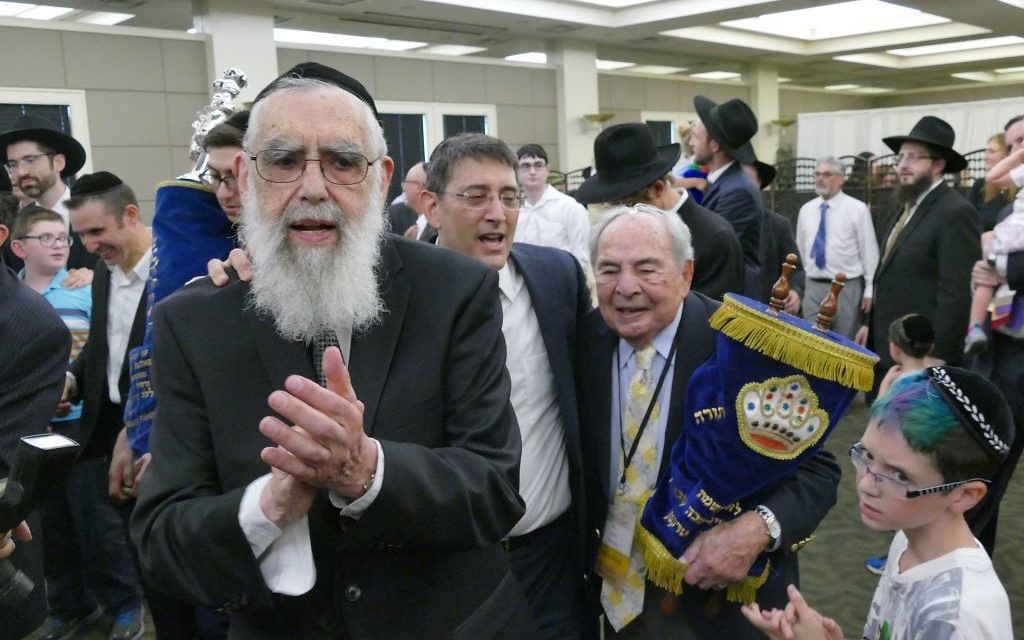
A synagogue is a house of prayer, a place to learn to Torah and a place of gathering, Rabbi Israel Meir Lau told Congregation Beth Jacob members and guests Sunday afternoon, July 9.
The former Ashkenazi chief rabbi of Israel was the keynote speaker at the dedication of the Orthodox congregation’s main sanctuary after the first phase of extensive renovations aimed at enhancing comfort and spirit.
The shul moved to Toco Hills in 1962 from a downtown location on Boulevard. The redesign took about 5½ years and involved input from the board, clergy and congregants. The result is amazing, Rabbi Lau said.
Get The AJT Newsletter by email and never miss our top stories Free Sign Up
“The renovation of such a sanctuary is very rare. I didn’t expect to see such a beautiful building,” he said during the dedication, the first time all but a handful of Beth Jacob members got to see the renovated sanctuary.
Architect Sandy Cooper said the shul was built in the 1960s with an inverted design, giving a feeling of being enclosed. When he began the redesign, he wanted to update the atmosphere.

The wood paneling above the sanctuary houses 12 stained-glass windows, each with a symbol representing one of the 12 tribes of Israel. The wood extends to a vaulted ceiling leading to a central stained-glass Magen David.
Glass windows in the bottom half of the walls open up the sanctuary to the outside world.
“It has a bigger feel. All of the windows were covered up. It was a beautiful design, but we replaced the windows to let people see inside and outside,” Cooper said.

Rabbi Lau spoke to the packed room about the importance of continuing the practice of Judaism. He emphasized the role of the synagogue in Jewish life and referred to Kristallnacht, when Nazis burned 1,046 synagogues and killed several hundred Jews.
The Nazis targeted synagogues because they understood that “Jewish existence, Jewish survival, is because of the shul. The shul is the heart of the Jewish people,” Rabbi Lau said. “If it is full of life, we are alive. If it is full of morality, we are here forever.”
The renovated sanctuary is dedicated to Rabbi Emanuel Feldman and his wife, Estelle, who joined the congregation as the rabbi and rebbetzin in 1952. Rabbi Feldman, who, like Rabbi Lau, flew in from Israel for the celebration, said the honor was a kind gesture, but the true dedication belongs to G-d, “who since its humble beginnings on Boulevard has provided us with hidden miracles.”

Rabbi Feldman credited Beth Jacob’s founders for taking a chance on a young, inexperienced man who had a vision for a shul that would revive the Orthodox community in Atlanta.
“We’ve grown up together. When I came here, I was 24 years old. My beard was not yet black, much less white,” he said, laughing.
Though they didn’t always know or agree with where Rabbi Feldman was going, the members stayed the course, eventually supporting his decision to install a full mechitzah despite criticism from the board.
Almost 65 years later, a new, high-tech mechitzah stands as a part of the renovation. Rabbi Feldman said it is one of the most creative mechitzahs he has seen.
“It’s the only one where the women can see everything and the men can see nothing, which is a paradigm for real life,” the rabbi said. “There’s only one other being who can see everything but can’t be seen. What’s that say about our women … that they are G-dly?”

The women’s section cheered the suggestion.
The mechitzah, which sits on the right side of the sanctuary when facing the bimah, still needs to have its lighting fine-tuned to complete the effect of one-way visibility.
Rabbi Ilan Feldman, who succeeded his father as Beth Jacob’s senior rabbi 25 years ago and marked his 63rd birthday July 9 while the congregation celebrated its renovations and a new Torah donated in memory of Edward Kesten, said the sanctuary design is symbolic of the mission of the shul: “To bring the word of G-d to the entire world. We share it with others because we know if they don’t have it, we don’t have it.”

Cooper took the vision and dreams of the congregation to create a beautiful space that is both a modern and ancient representation of the Jewish people, the younger Rabbi Feldman said.
“It’s a perfect match for the spiritual characteristics of life,” the rabbi said. “It represents the spiritual energy and grace of the community.”
Correction: A previous version of this article overstated the death toll from Kristallnacht.
Photos by Michael Jacobs
-
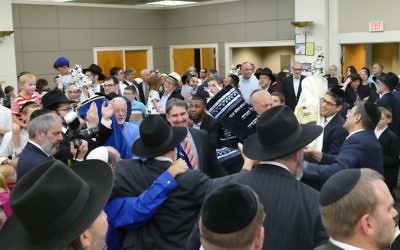
- Nearly an hour of dancing with the shul’s Torahs in Heritage Hall follows the parade along Breezy Lane.
-
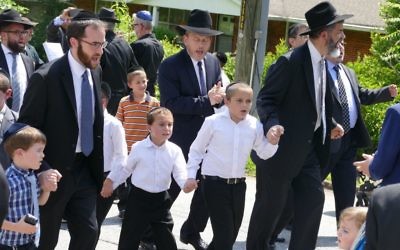
- Beth Jacob members, including Rabbi Ilan Feldman, dance their way along Breezy Lane to bring the new Torah home.
-
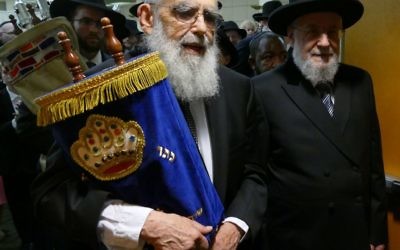
- Accompanied by Rabbi Israel Meir Rau, Rabbi Emanuel Feldman carries one of Beth Jacob’s Torahs from Heritage Hall to the new sanctuary.
-
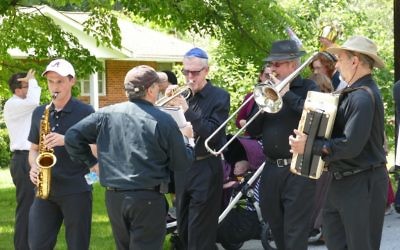
- Musicians lead the way during the Torah parade from the Schloss home down Breezy Lane to Beth Jacob.
-
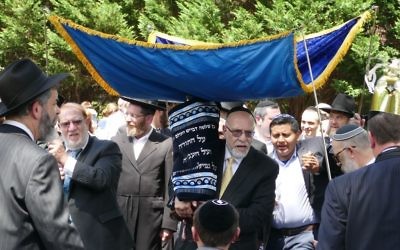
- The new Beth Jacob Torah, dedicated in memory of Edward Kesten by the Schloss and Reznick families, parades along Breezy Lane beneath a chuppah.
-
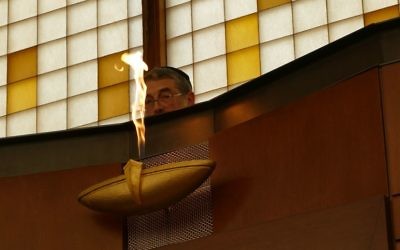
- Mike Cenker, the project manager for the renovations, ignites the ner tamid in the main sanctuary on behalf of Rabbi Emanuel Feldman.
-
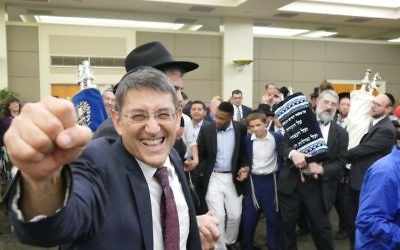
- The Atlanta Scholars Kollel’s Rabbi David Silverman is at the center of the Torah dancing before the sanctuary dedication.




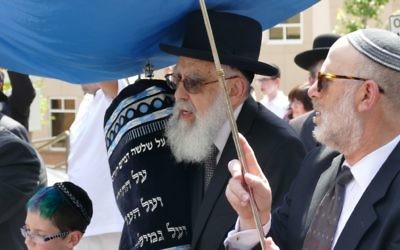
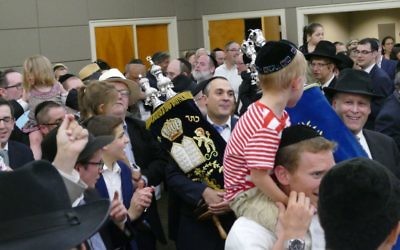
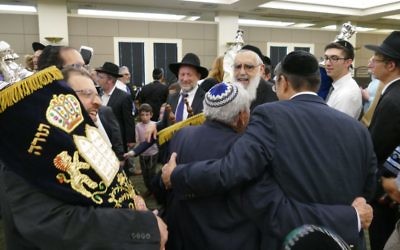
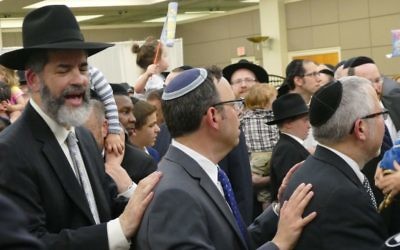
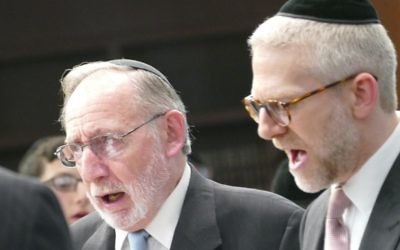
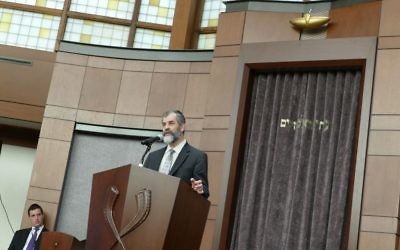
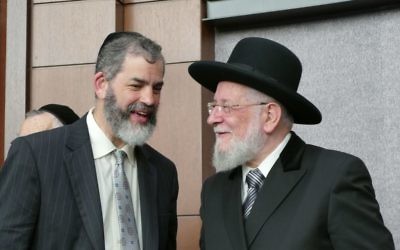
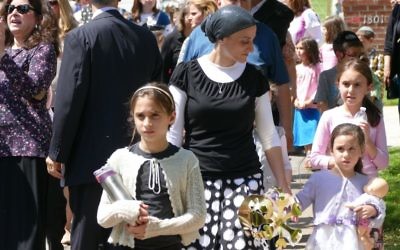
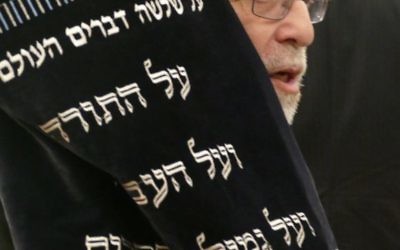
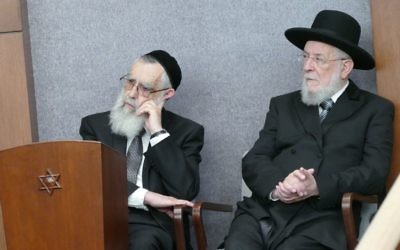
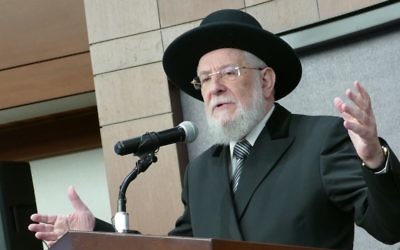
comments